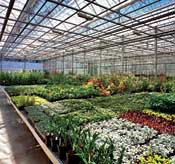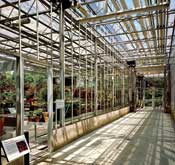Commercial Buildings Open Their Windows
Since RWE, an energy company, purports to promote an image of responsible energy usage, its participation in the experimentation with natural ventilation in this project has paid off, literally and figuratively. It saved 30 to 35 percent in energy use over an equivalent conventional building with a double-glazed, single-skin facade. According to McLaughlin, who met with the owner not long ago, "The building has performed very well for them. For us, it is an opportunity to see the excellent results when the architect creates a superior design and the owner is prepared to do something a little different."
CYTS Plaza, now under construction in Beijing, demonstrates that 10 years later, the concept of using a double facade for naturally ventilated buildings is still the standard. Designed by Hamburg-based architects von Gerkan, Marg and Partners and Arup Hong Kong, this 22-story, 246-foot tower will be the headquarters of a tour-and-travel-services company.
|
|||||||
At CYTS, there is a vertical band of louvers in the exterior facade covered by a side-hinged panel on the interior facade, which individual users can open and close for fresh air. The building has a decentralized forced-air mechanical system, as well. Each floor is divided into halves, with a special ventilation room along the facade that takes in outside air, conditions it, and distributes it by a ceiling fan throughout each half-zone and into the 15-inch air cavity. Typically, the zone adjacent to the exterior of a building suffers from the most extreme temperature fluctuations. Air circulation next to the outer skin can reduce solar gain in the summer and act as a thermal blanket in the winter.
During the spring and fall in Beijing, it is not unusual for owners to turn off the cooling systems in office buildings. During this time, the ambient temperature depends solely on the circulation of outside air from the intake rooms, and air brought in through the operable panels. At times of the year when the mechanical system is operating, users are still able to open and close the panels, and the system will continue operating. Two large enclosed atria increase the access to natural daylight and the effectiveness of the natural ventilation system to reach all the users. The openings provide a natural smoke extraction system, as well, required by Chinese code under certain circumstances.
If people prefer it and there are successful models to draw on, why are naturally ventilated office towers not prevalent in the U.S.? "You need to understand your climate to embrace natural ventilation," remarked Flack and Kurtz's Bisel. "Northern Europe, northern China, and northern California are all examples of places with temperate, nonhumid climates that lend themselves more easily to natural ventilation than the east coast and southeast regions of the U.S." Although more extreme climates have plenty of days when it is delightful to have the windows open, places that have longer springs and falls and milder summers and winters have more incentive to take advantage of the natural climate in building design.











